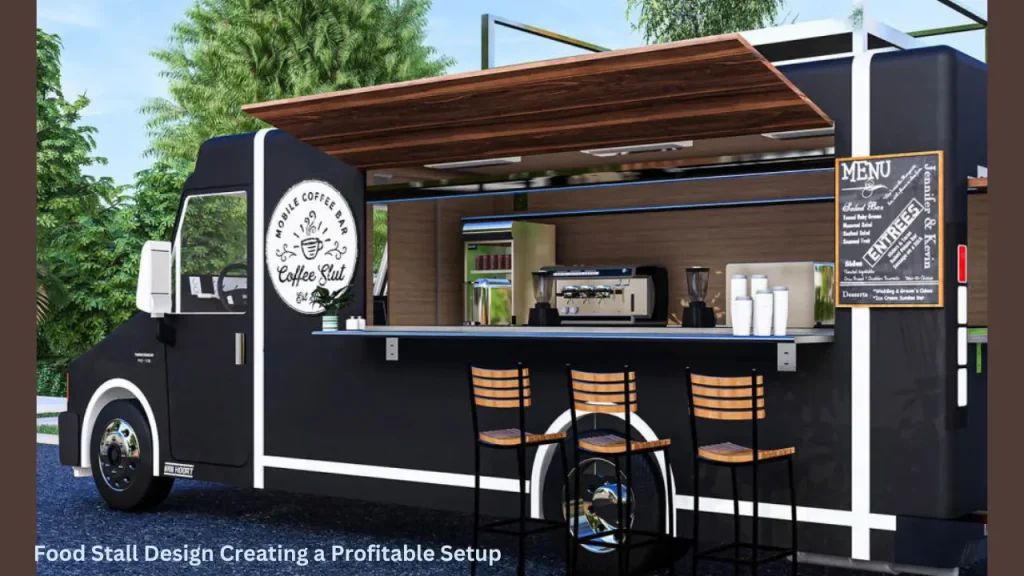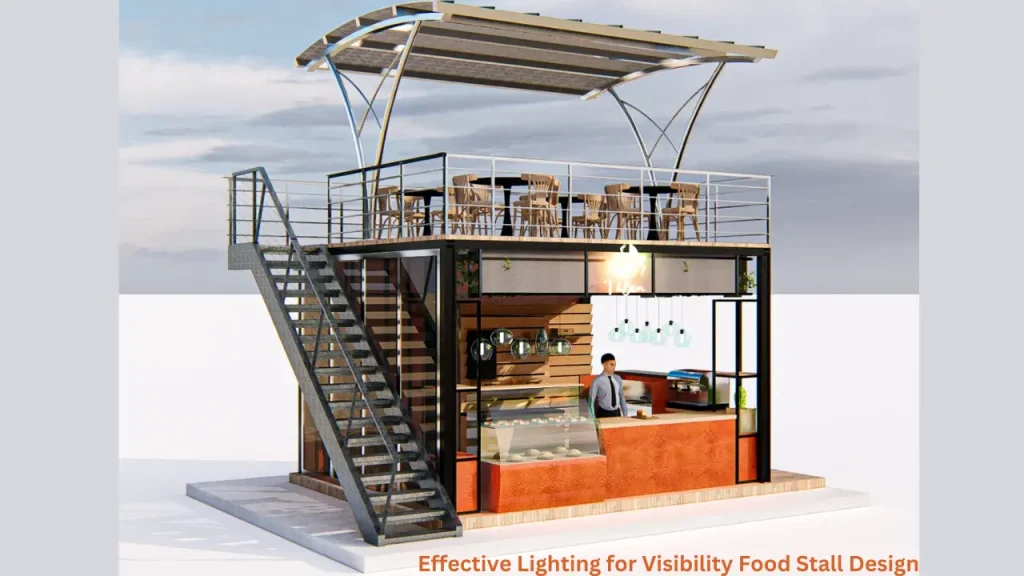Setting up a successful food stall design requires careful planning and creativity. A well-thought-out stall attracts customers, ensures efficient workflow, and enhances food presentation. Whether you are starting a street food business or setting up at a food market, the layout, materials, and branding all play a crucial role. A great design not only provides functionality but also creates a memorable experience for customers.

What Is Food Stall Design?
The layout is the foundation of any food stall. It determines how customers interact with your stall and how smoothly operations run. A good design ensures that staff can work efficiently while maximizing customer engagement.
A compact and organized setup makes it easier for employees to prepare food and serve customers quickly. The counter should be easily accessible for placing orders and collecting food. A visible menu and an open display help in attracting customers. If space allows, adding a small seating area can improve customer experience.
| Food Stall Layout Options | Best For |
|---|---|
| Open-front stall | Quick service, high visibility |
| U-shaped layout | Small spaces, efficient workflow |
| L-shaped layout | Limited space, corner stalls |
| Cart-style stall | Mobility, pop-up markets |
Durable and Weather-Resistant Materials
The materials used in a food stall design must be durable and suitable for the environment. Since most food stalls are outdoors, they should withstand weather conditions like rain, wind, and heat. Stainless steel is a great option for food preparation areas due to its hygiene and durability.
Using waterproof roofing materials, like polycarbonate sheets, can protect the stall and customers from rain. Wooden elements add a rustic feel, while aluminum is lightweight and rust-resistant. Choosing eco-friendly materials, such as bamboo or recycled wood, enhances sustainability.
Branding
An attractive food stall design helps in drawing customers. Bright colors, unique signage, and a catchy logo create a strong brand identity. Using LED lights enhances visibility at night, making the stall stand out in a crowded marketplace.
Themed designs, such as vintage-inspired stalls or modern minimalist setups, help establish a unique identity. Adding cultural elements to the design can also resonate with local customers. A simple, stylish design with clear branding increases customer trust and makes the food stall recognizable.
Efficient Cooking
A well-arranged food stall design ensures fast service and a smooth workflow. The cooking area should be separate from the serving counter to avoid congestion. Equipment placement should allow employees to move freely and handle orders efficiently.
A common approach is placing the cooking station at the back, a preparation counter in the middle, and the service counter at the front. This setup minimizes delays and keeps the process organized. If grilling or frying is involved, proper ventilation is necessary to prevent heat buildup.
Displaying the Food Attractively
The way food is presented significantly impacts customer decisions. A food stall design should showcase food in a way that tempts customers. Transparent display cases for pre-made items like sandwiches, pastries, or fried snacks keep the food visible and fresh.
For stalls selling grilled or fried foods, an open cooking setup where customers can watch their food being prepared adds excitement. Small chalkboards or digital menu screens help in displaying specials or promotions effectively.
Ensuring a Safe and Clean Setup
Food hygiene and safety are crucial for any food stall design. Using easy-to-clean surfaces and maintaining proper food handling practices ensure compliance with health regulations. The stall should have designated areas for waste disposal, and ingredients should be stored properly to maintain freshness.
A handwashing station with a water container and soap is essential for hygiene. Staff should wear gloves and aprons while handling food. Ensuring that cooking oil and waste materials are disposed of properly keeps the stall environment clean and safe.
| Food Safety Essentials | Importance |
|---|---|
| Handwashing station | Prevents contamination |
| Waste disposal bins | Keeps stall clean |
| Refrigerated storage | Maintains food freshness |
| Proper ventilation | Reduces heat and smoke |
Right Equipment for the Stall
Every food stall design needs efficient cooking and storage equipment. Portable gas stoves, deep fryers, and grills are common in food stalls. Having compact refrigerators or coolers helps in storing perishable ingredients.
Selecting energy-efficient appliances reduces costs and improves sustainability. Multi-purpose cooking tools, like combination ovens or induction cookers, save space while enhancing productivity. Keeping equipment organized ensures quick preparation and serving.
Effective Lighting for Visibility

Lighting plays a crucial role in any food stall design, especially for stalls operating at night. Bright, warm lighting creates a welcoming ambiance and makes the food look more appealing. LED lights are energy-efficient and long-lasting, making them a great choice.
Spotlights focusing on the food counter help in drawing attention, while soft overhead lighting enhances the overall aesthetics. Colored lights or neon signage can add personality to the stall and make it stand out in busy markets.
Customer Experience
A well-planned food stall design ensures a pleasant customer experience. The stall should have a clear ordering and pick-up area to avoid confusion. If possible, adding a few stools or a standing bar allows customers to enjoy their food comfortably.
Providing shade with umbrellas or awnings protects customers from sun and rain. If the stall is at an event or night market, ensuring enough space for movement prevents crowding. Creating an enjoyable environment encourages repeat customers.
Smart Space Utilization
A profitable food stall design uses space efficiently while minimizing costs. Foldable counters, stackable storage, and multipurpose equipment help in optimizing limited space. Mobile food carts with wheels allow flexibility in changing locations for better business opportunities.
A well-thought-out stall layout enhances speed and efficiency, reducing waiting times for customers. Keeping operational costs low while maintaining high food quality leads to better profitability.
Conclusion
A successful food stall design requires a balance of aesthetics, functionality, and efficiency. From layout planning to branding and food presentation, every element plays a role in attracting customers and ensuring smooth operations. Using durable materials, proper lighting, and efficient equipment enhances the overall experience. By prioritizing safety, hygiene, and comfort, food stalls can create a lasting impression and grow into a profitable business.